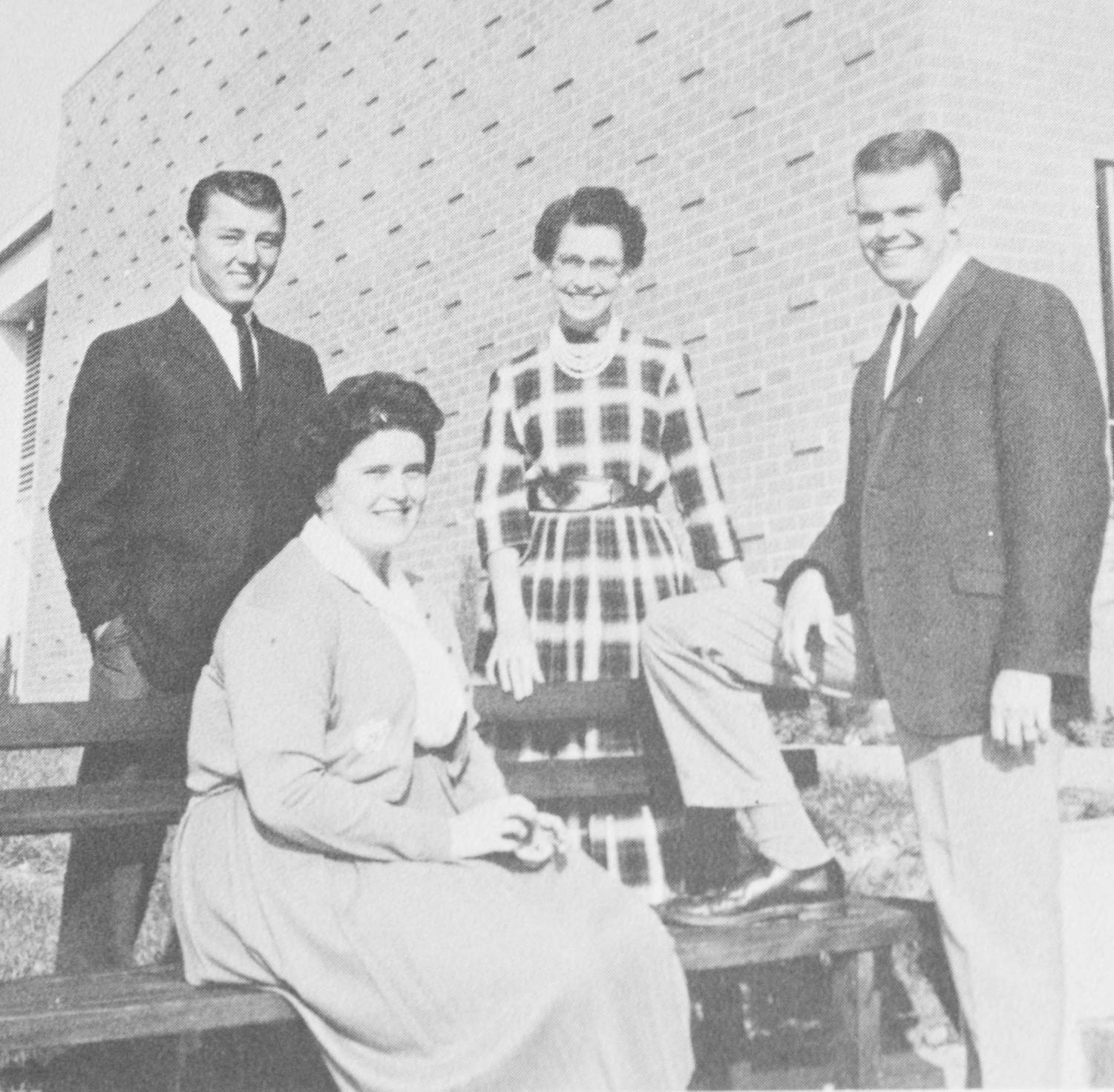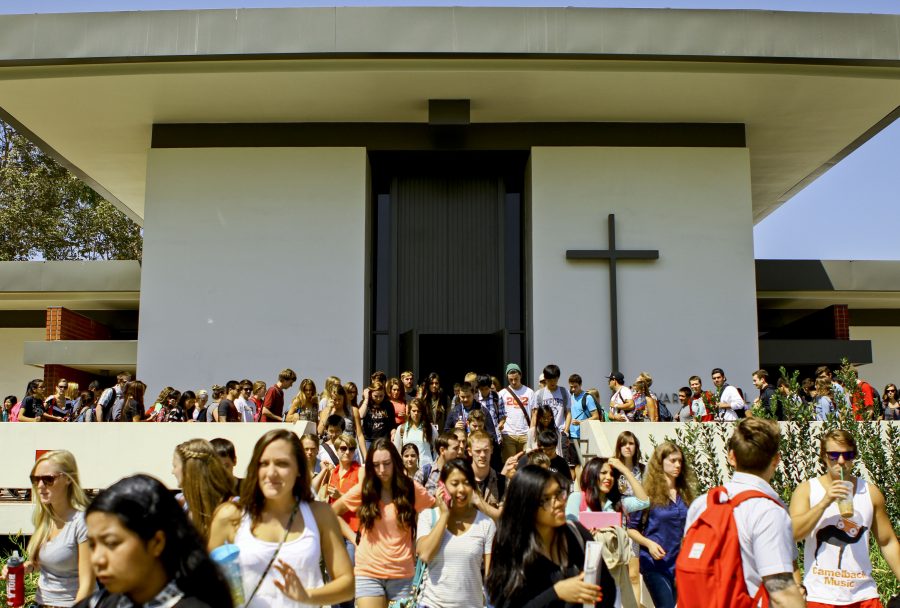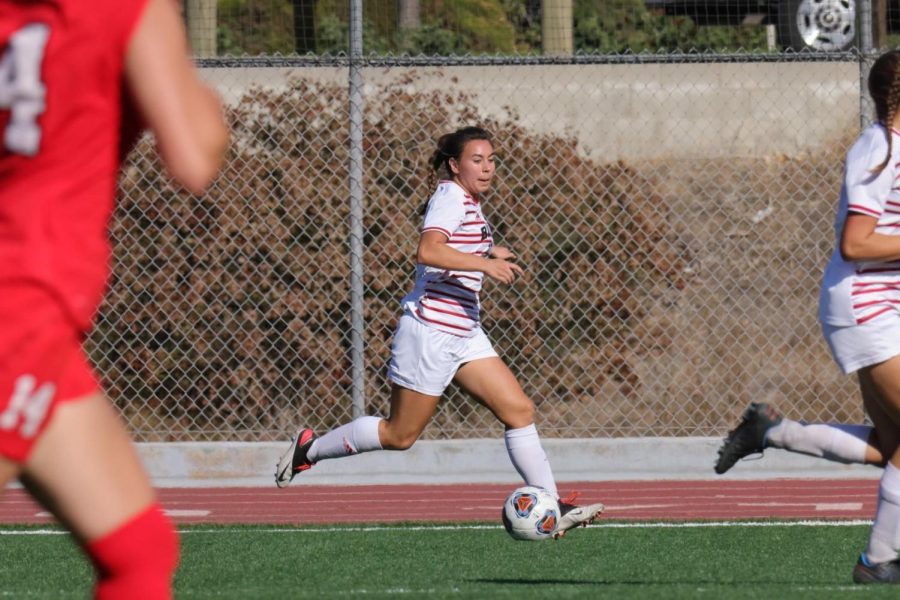Imagine the Biola University you know and love with a cafeteria that is one-third of the size that it is now. Or picture all of the buildings without air conditioning. Or a soccer field that’s “ground level.” Since its birth in 1908, Biola University has undergone great changes in terms of physical aspects, academics and the student body. Chaplain Ronald Hafer, Intercultural Studies professor Murray Decker and Ken Bascom, the senior director of facilities planning and construction, reflected on the different changes they observed during their years at Biola University.
Physical changes: from downtown L.A. to “the boonies”
“We all thought Dr. Sutherland had lost his mind,” Hafer chuckled, as he reflected on one of the most influential changes in the history of Biola University. “Biola University was originally in downtown L.A. The student body was 800, and there were two 13-story hotels that were dorms. Eighty-five to 90 percent of the students dormed.”
It was a time in which chapels and church services were all held at “The Church of the Open Door,” and people drove from their different towns to the city to hear the respected Bible teacher J. Vernon McGee. The 3,500 church seats were always packed; popular churches today such as Saddleback and Grace Evangelical Free did not exist. However, everything changed once Biola University moved to its present location in La Mirada in 1959, the year after its 50th Anniversaryanniversary.
Numerous physical changes have taken place across Biola University’s campus, according to Bascom. Bascom has been a full-time employee at Biola University for 38 years and was involved with every new construction project since 1976. Highlights in physical changes over the years include the additions of Hope, Hart, a remodeled library, Bluff housing, Sigma Chi, the Fitness Center, Metzger, Horton and the Crowell Business Building. Since Biola University’s foundation in the heart of La Mirada, the gym and the Student Union Building have been expanded, and the library, which used to be Rosemead Hall, was rebuilt. It was a time of immense physical changes and expansion, according to Bascom.
“We have gone from 391,000 square feet of building space to 1.1 million,” he said. “The original campus had four buildings — Myers, Sutherland, Bardwell and Marshburn — as well as a small library and health center. It was a time where all of the buildings originally had no air conditioning, most had tile floors and there were 1,400 students – 1,200 undergraduates and 200 in Talbot.”
Decker remembered the ample space across campus from when he started teaching at Biola University 14 years ago.
“The parking lot behind Alpha was basically a lot of weeds,” he said. “There were gravel roads; hardly any cars drove through campus. There was no Bookstore bookstore or Student Services building. There was just a big slope between the SUB and the gym!”
Academic Changes: Raising the bar
In addition to countless physical changes, Biola University has experienced a revolution in terms of academics. In addition to new schools (such as the Schools of Business and Education), and majors and the expansion in various departments, Decker has also noticed a rise in admissions standards.
“It is exciting to see that Biola University has become more rigorous academically than it was before,” he said.
As the quality of students accepted to Biola University rose, the faculty members who want to teach at Biola have increased with every year.
“Biola is attracting faculty from some of the top schools and research universities around the world,” Decker said. “Fifteen to 20 years ago, when people talked about top Christian schools, they talked about Wheaton University and Calvin College … now you have Biola’s name in there with that list of schools.”
The ever-increasing student body
“More than 50 years ago, we would have never expected the student body to grow to more than 5,700,” Hafer said. “As the student body grew, Biola gained reputation.”
Indeed, over the years, Biola has experienced a tremendous growth in the number of undergraduates. The growing student body has forced Biola to expand further: for example, Biola University started to use the McNally campus in fall 1978 and eventually owned the campus around 10 years later.
“There is a noticeable increase in the volume of traffic of people,” Decker said. “Because there are so many students — and twice as many undergraduates — there are a lot more things going on around campus now, such as games, concerts and different events.”
Fast forward: Biola’s Future
When asked about prospective changes for Biola University’s future, Hafer, Decker and Bascom provided a variety of responses. Further physical changes are definitely in the makings, according to Bascom.
“The next project on our list is expanding the facilities of Talbot,” he explained. “There is a model for this plan in the lobby of Myers. We are planning two buildings: one will be in the grassy area bordering Feinberg; the other will involve the tearing down and rebuilding of Myers.”
Besides other physical remodeling, the student population at Biola is expected to increase further and become more diverse.
“I am excited about Biola’s increasing student and faculty diversity,” Decker shared. “I anticipate Biola will continue to reflect not only the cultures of L.A. but of the world.”
While numerous changes await Biola University in its future, one aspect hopefully remains the same: the love and devotion to Jesus Christ shared by all those who attend Biola.
“I’m finishing 42 years at Biola.; Wwhen I was a freshmen, Biola was celebrating its 50th Anniversary,” said Chaplain Hafer. “Since I’ve been at Biola for half of its life, it’s interesting to reflect. I agree with those who say that ‘Biola’s best years are ahead’ … as long as we keep our Mission Statement and Jesus Christ as number one, the sky’s the limit!”







